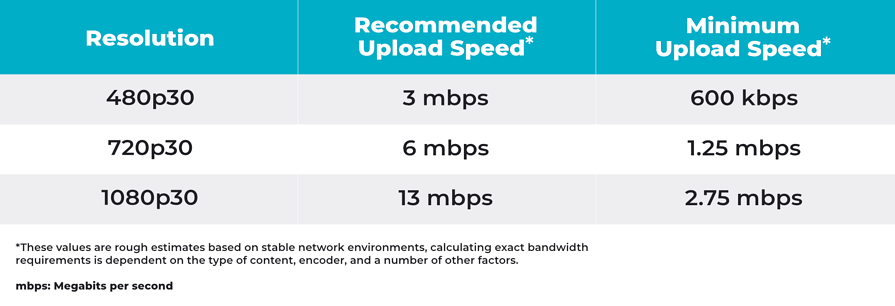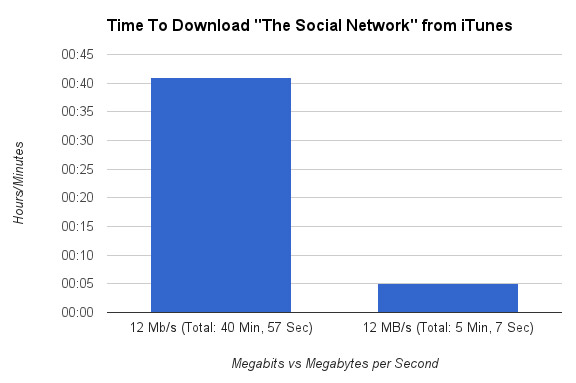A Comprehensive Overview to Measuring Megabits Per Second for Home Use
A Comprehensive Overview to Measuring Megabits Per Second for Home Use
Blog Article
How Megabits Per Second Impact Your Online Activities
The idea of megabits per second (Mbps) plays a crucial function in shaping our on the internet experiences. As electronic tasks multiply, understanding the effects of Mbps on video, streaming, and gaming conferencing becomes increasingly vital. Higher Mbps can boost performance and decrease disruptions, while inadequate speeds might promote irritation and ineffectiveness. Analyzing your house's details needs in connection to these rates is essential, particularly as numerous tools contend for data transfer. Yet, the subtleties of how Mbps impacts various online activities warrant more expedition, especially as our reliance on digital connectivity remains to evolve.
Recognizing Megabits Per Second
When thinking about internet rate, it's vital to understand the principle of megabits per second (Mbps), which acts as a conventional measurement for information transfer prices. This statistics quantifies just how much data can be sent over a web connection in one second, offering a clear understanding of performance capacities - Megabits Per Second. For context, one megabit is equal to one million bits, and Mbps is commonly made use of to share data transfer for various online activities
A higher Mbps suggests a quicker internet connection, enabling individuals to do jobs such as downloading documents, searching websites, and engaging in online video gaming extra efficiently. Regular surfing requires around 1-5 Mbps, while streaming high-def video may require 5-25 Mbps. Understanding these demands is important for establishing the appropriate net speed needed for specific activities.
In addition, the number of devices attached to a network can affect total efficiency. Several users streaming, pc gaming, or downloading simultaneously can strain offered data transfer, leading to slower rates - Megabits Per Second. Assessing personal online practices and needs is important in picking a web strategy that straightens with one's demands, making certain a seamless digital experience
Streaming and Buffering Issues
Streaming high-definition material has actually ended up being a staple of modern-day on the internet enjoyment, yet it is often accompanied by annoying buffering problems. These interruptions can dramatically interfere with the checking out experience, resulting in dissatisfaction and possible loss of audience engagement. Buffering occurs when the data transmitted from the streaming solution is not gotten rapidly sufficient to maintain a smooth playback, commonly because of inadequate internet speed measured in megabits per second (Mbps)

Additionally, real-time streaming can be affected by network blockage, which occurs when numerous tools share the exact same transmission capacity. Maximizing connection speed and making certain sufficient Mbps is necessary for a seamless streaming experience. As streaming solutions proceed to advance, comprehending the effect of Mbps on buffering issues remains vital for customers looking for uninterrupted amusement.
Online Gaming Efficiency
The impact of net rate on on-line activities prolongs past streaming, significantly influencing on-line gaming performance. In affordable pc gaming, low latency and high bandwidth are essential for a smooth experience. A rapid link lessens lag, enabling players to respond quickly to in-game occasions, which can be the difference in between victory and defeat.
Bandwidth, determined in megabits per second (Mbps), plays an important duty in supporting several gadgets and gaming systems simultaneously. Inadequate data transfer can lead to dropped links or lowered game high quality, negatively impacting gameplay. For instance, online multiplayer video games call their explanation for considerable data transfer, especially during peak gaming hours when many players are online.
Hectic first-person shooters require greater rates to maintain responsiveness, while turn-based technique video games may work reasonably well on lower rates. As online video gaming proceeds to develop, with boosting graphical integrity and more complicated multiplayer settings, the need for higher Mbps will just increase.
Video Clip Conferencing Top Quality
In today's digital landscape, video clip conferencing top quality is greatly influenced by internet rate, particularly in regards to bandwidth and latency. Top notch video clip calls call for enough data transfer to transmit audio and video data seamlessly. Generally, a minimum of 1.5 Mbps upload and download rates is suggested for standard meaning video clip, while high-def video conferencing usually demands at the very least 3 Mbps.
Latency, or the hold-up between sending out and getting information, also plays a vital role in the individual experience. Higher latency can lead to echo, lag, and disjointed communications, which can prevent cooperation and interaction during conferences.
In addition, multiple individuals in a video seminar can stress offered bandwidth, requiring also greater rates. Network congestion, usually triggered by simultaneous tasks like streaming or downloading, can additionally weaken video high quality. Hence, for organizations counting on video clip conferencing for remote cooperation, comprehending the partnership in between megabits per overall and second interaction quality is vital for preserving efficiency and boosting digital interactions.
Choosing the Right Internet Plan
Selecting an appropriate net plan is critical for ensuring ideal efficiency in various online tasks, especially in settings that require high data transfer, such as video clip conferencing and online pc gaming. Megabits Per Second. When taking into consideration a web plan, it is necessary to assess both the speed and data allocation to match your particular usage needs
For homes with numerous users participating in synchronised tasks, a plan providing higher megabits per my latest blog post second (Mbps) is advised. Normally, a minimum of 25 Mbps appropriates for standard streaming and surfing, while plans exceeding 100 Mbps are more effective for even more intensive jobs. Additionally, take into consideration the nature of your online tasks; video clip conferencing needs a minimum of 1.5 Mbps submit rate, while on-line gaming might need a lower latency but consistent link.
It is likewise essential to examine your data cap. Unrestricted information plans can prevent strangling and interruptions, particularly if heavy use is expected. Lastly, research provider in your area, as schedule and pricing can differ. By attentively picking an internet plan tailored to your needs, you can enhance your on-line experience, making certain smooth, check out this site uninterrupted access to your recommended activities.
Conclusion
In conclusion, the value of megabits per second (Mbps) in shaping online tasks can not be overemphasized. A thorough understanding of individual or family Mbps needs is vital for choosing an ideal net strategy that sufficiently sustains diverse online activities and customer needs.

Generally, a minimum of 25 Mbps is ideal for basic streaming and surfing, while plans surpassing 100 Mbps are more suitable for more intensive tasks. Additionally, think about the nature of your online tasks; video clip conferencing calls for at least 1.5 Mbps submit rate, while on the internet pc gaming may require a reduced latency but consistent link.
Report this page